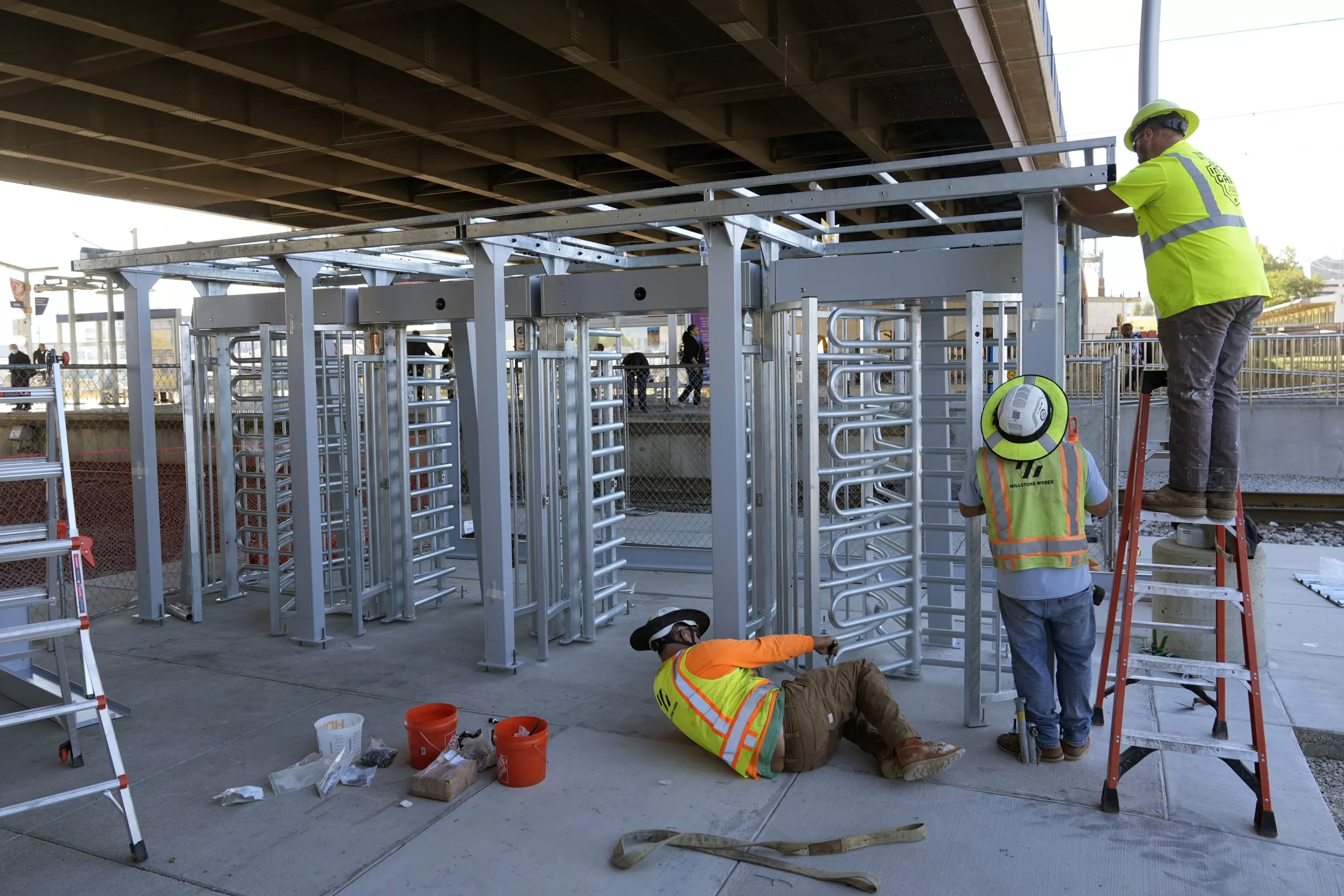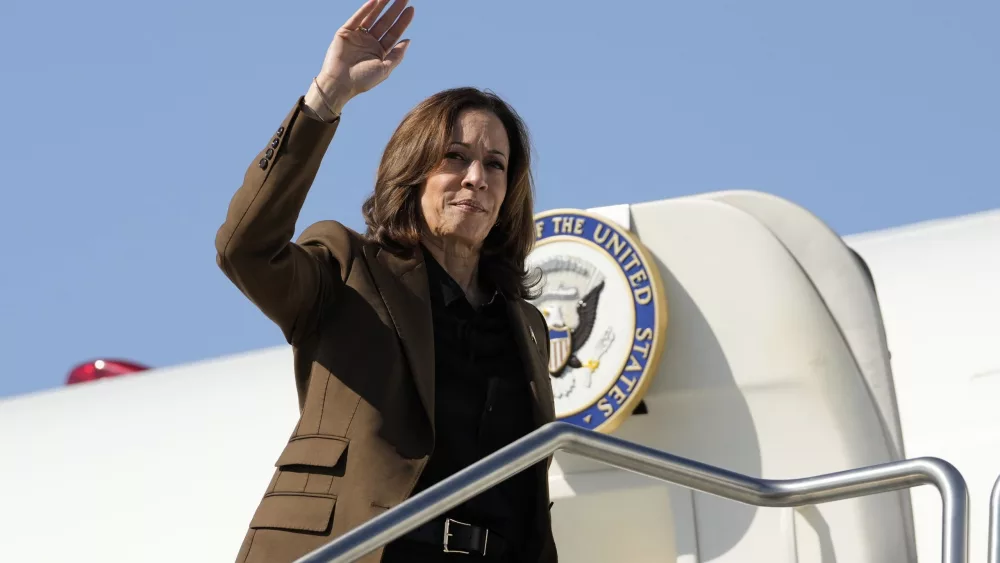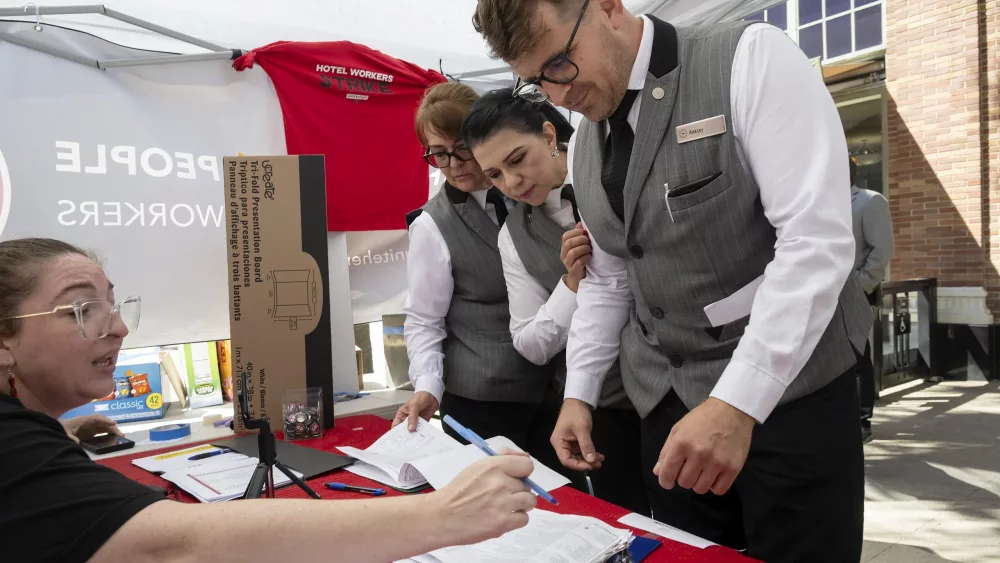CHICAGO (AP) — Dominique Davenport was waiting for a ride home after getting off the MetroLink light rail one night in East St. Louis, Illinois, when he heard an argument followed by gunshots behind him on the station’s platform.
A teenager had been killed, the latest act of violence for a St. Louis-area transit system with a reputation for crime and where anyone could board without even showing a ticket.
“You could just be getting off work and somebody gets an attitude,” Davenport said. “Big drug addicts, drug dealers, you’ve got so many different personalities, so many different types of people who go through things. And everybody catches the train.”
As transportation hubs across the country attempt to win back riders who haven’t returned since the pandemic — 26% as of September 2023 — one major obstacle is the sometimes inaccurate perception that transit crime is on the rise. Many systems are bulking up enforcement and targeting their efforts on people who try to ride without paying.
MetroLink has begun adding 8-foot (2.4-meter) metal gates to ensure customers can’t enter the platform without a valid fare card. That’s a major change from the honor system the two-state light rail had employed since its inception in 1993, with fares only enforced through onboard spot checks and the threat of fines for repeat violators.
Transit systems in other metropolitan areas such as New York, Chicago, Washington, D.C., Philadelphia and San Francisco, already required upfront payments, but lately they have been fortifying the entrance gates to curb the temptation for riders to simply hurdle a turnstile.
But does cracking down on ticketless riders really help eliminate violent crime? As Janno Lieber, chairman and CEO of New York’s Metropolitan Transportation Authority, explained, “not every fare evader is a criminal” but virtually all criminals “evaded the fare.”
The new gates being installed at the St. Louis-area MetroLink stations are commonly known elsewhere as “fare gates.” But Kevin Scott, general manager for security at Bi-State Development, the agency overseeing transit in the region, is quick to correct the reference. They are “security gates,” he says, stressing that the $52 million purchase, which also includes the addition of 1,200 regularly monitored cameras, is less about catching fare-skippers than improving safety.
“We’ve seen it time and again where something plays out on the street, then everybody runs for the MetroLink platform and that’s where the shooting happens or that’s where the stabbing happens,” Scott said. “We’re really trying to impact the overall perception that the system is unsafe. We could have taken five or six steps forward with security, but if we have an incident play out, now we’re three or four steps back.”
Assaults and homicides on public transit roughly doubled between 2011 and 2023, according to the Federal Transit Administration. Several transit agencies, including the St. Louis MetroLink, have reported a recent drop in crime.
There is less current national data about the link between crime and fare evasion. However, people who didn’t pay a fare accounted for nearly 94% of those arrested for violent crimes on the Los Angeles Metro from May 2023 through April 2024. Metro is testing taller fare gates and some stations now require customers to tap a card when they exit as well as enter.
Joshua Schank, who wrote a report for the Mineta Transportation Institute examining whether transit should be free, said gated entrances are emblematic of the major question at the root of public transportation: Should it be a service for everybody or just those who can afford to ride?
“There’s a tendency to default to the idea that enforcing fares or putting up fare gates is a security solution because it’s something concrete you can do,” said Schank, a partner with InfraStrategies. “Maybe that is the answer, but it’s worth exploring other behavioral elements to improve security and not just defaulting to fare gates.”
New York’s subway system has long been notorious for fare evasion, with one widely watched YouTube video showing a man squeezing through a turnstile just by pulling it slightly backward, and another showing five people crowding through a gate after paying just one fare. Earlier this year, more than 1,400 turnstiles were modified to prevent slipping through and other alterations are being tested to make them harder to jump over.
Like New York, the Metro subway system in Washington, D.C., has been working to make its gates higher while beefing up patrols for unpaid riders. Police have written more than 10,000 citations for fare evasion this year, nearly three times the number from the same period last year. More than 250 people who were caught skipping a fare were arrested for open warrants and 16 guns were recovered.
Last month, four people were shot to death while sleeping on an elevated train in Chicago. Gate improvements already had been part of the Chicago Transit Authority’s plan to bolster security at L stations, along with better patrols and a pilot program to detect guns.
Bay Area Rapid Transit in San Francisco has had fare gates since it opened in 1972, but until 2018 an officer had to actually witness someone evading a fare to write a ticket. Now, customers risk fines if they don’t carry proof of payment or a fare card. Also, every gate is being reinforced with security wings, which spokesman Jim Allison says are nearly impossible to push open “unless you’re an NFL linebacker and take a full run at it.”
“We began to view fare evasion a little differently, as not just a cost of doing business but also a cultural liability,” Allison said. “There was a sense that because so many people were observing fare evaders, it was eroding trust in the system.”
Sound Transit, which operates the regional light rail system in the Seattle area, has never had fare gates and has no plans to add them after one study concluded the systemwide cost could approach $200 million.
The Southeastern Pennsylvania Transportation Authority in Philadelphia estimates it loses as much as $68 million annually due to fare evasion. Still, seldom do expensive new gates like the glass ones SEPTA is installing quickly pay for themselves through more effective toll enforcement.
That’s why many systems, including the St. Louis MetroLink, justify the purchase less through a financial lens than through other factors such as security and fairness.
The Jackie Joyner-Kersee Center station near where Davenport works in East St. Louis was among the first to be upgraded. Until the fare card system becomes operational, workers open the gate manually when customers show proof of payment.
“I like it,” Davenport said. “If they know you’re going to pay your fare and take the train home, they’re going to let you through.”
Brought to you by www.srnnews.com








